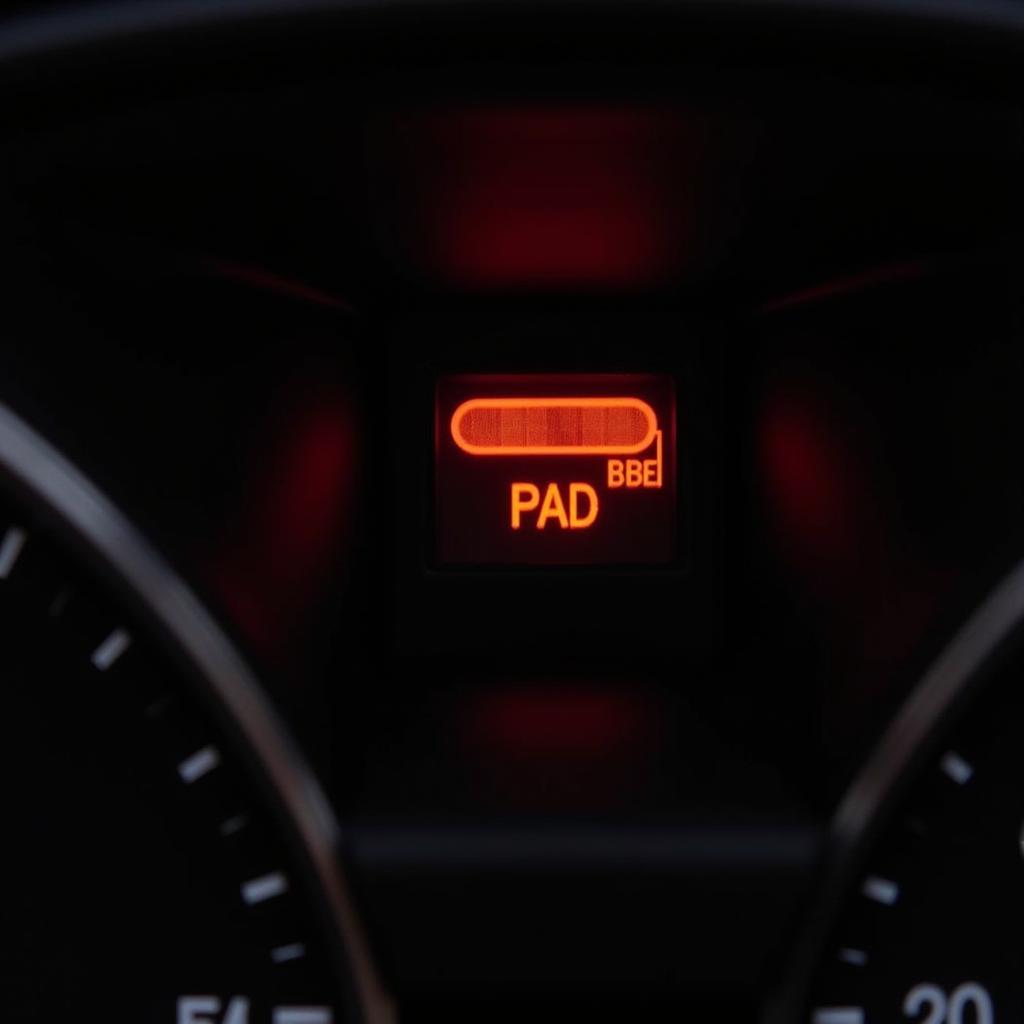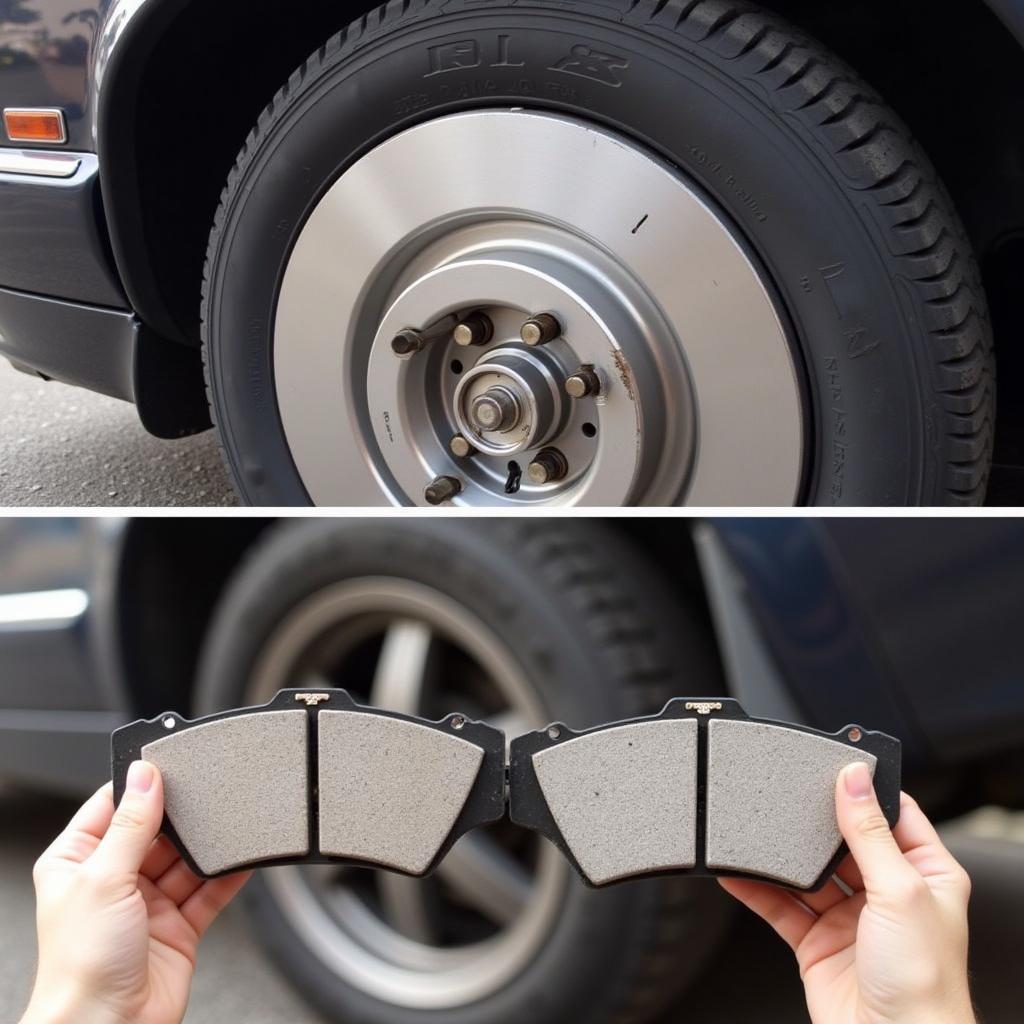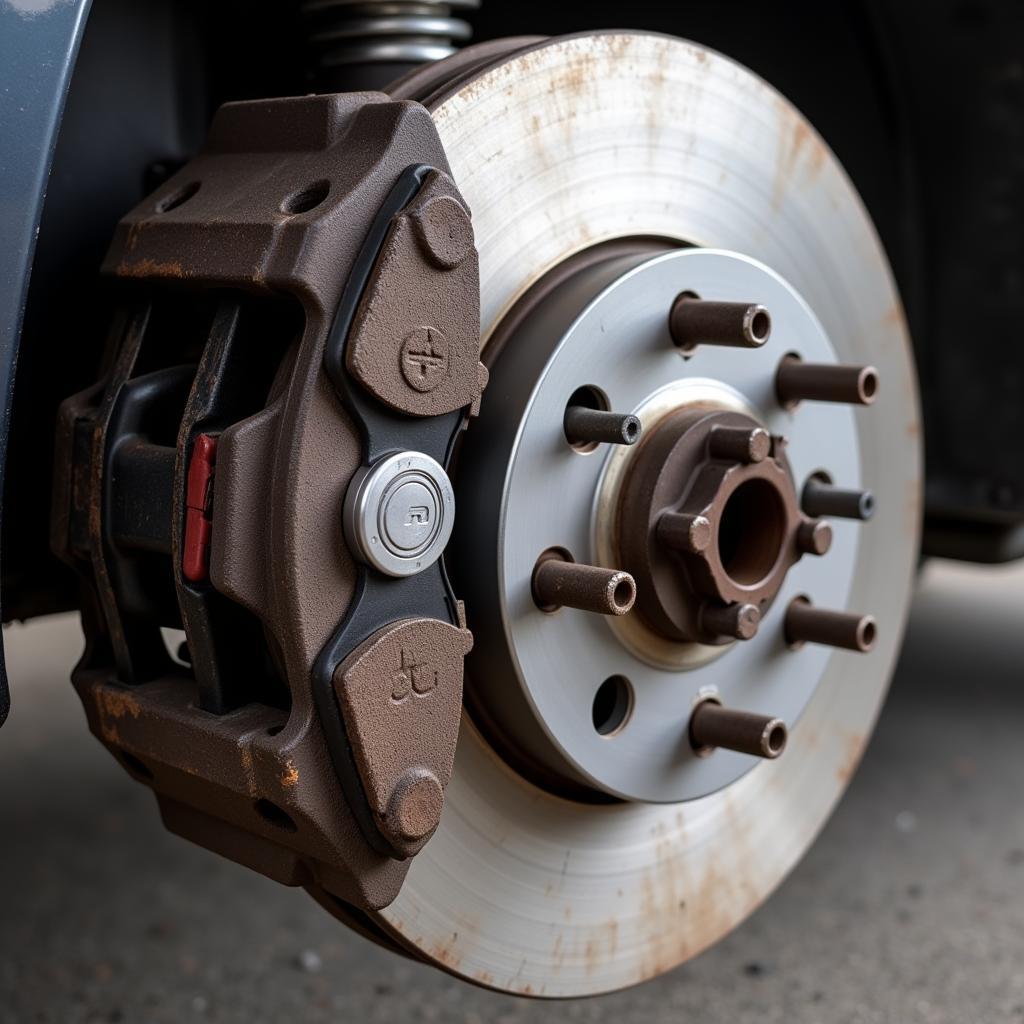The dreaded brake pad warning light illuminating on your Jaguar XJ’s dashboard can be an unwelcome sight. While it can signal a serious issue, often it simply means your brake pads are due for a replacement. This comprehensive guide will walk you through understanding, diagnosing, and resolving the brake pad warning light on your Jaguar XJ, including how to reset it.
 Jaguar XJ Dashboard with Brake Pad Warning Light
Jaguar XJ Dashboard with Brake Pad Warning Light
Understanding Your Jaguar XJ’s Brake Pad Warning System
Your Jaguar XJ is equipped with a sophisticated electronic system that monitors the condition of your brake pads. A sensor, usually embedded within the brake pad itself, constantly measures the pad’s thickness. Once the pad wears down to a predetermined level, the sensor triggers the warning light on your dashboard.
What to Do When the Warning Light Turns On
- Don’t panic: While the warning light indicates attention is needed, it doesn’t necessarily mean you need to stop driving immediately.
- Assess your brakes: Pay attention to how your brakes feel. Do you hear any unusual noises like grinding or squealing when braking? Is your brake pedal feeling spongy or lower than usual? These can indicate severely worn brake pads that require immediate attention.
- Inspect your brake pads: If possible, visually check your brake pads through the spaces between the wheel spokes. If you see less than ¼ inch of brake pad material remaining, it’s time for a replacement.
 Inspecting Brake Pads on a Jaguar XJ
Inspecting Brake Pads on a Jaguar XJ
DIY Brake Pad Replacement: Is it Right for You?
Replacing brake pads can be a straightforward task for those comfortable with basic car maintenance. However, working on a luxury vehicle like a Jaguar XJ requires specific knowledge and tools.
Before attempting a DIY brake pad replacement:
- Consult your Jaguar XJ’s owner’s manual for model-specific instructions and safety precautions.
- Invest in high-quality replacement brake pads designed for your Jaguar XJ’s model year and trim level.
- Gather the necessary tools, including a torque wrench, socket set, C-clamp, and brake cleaner.
If you’re unsure about any step of the process, it’s always recommended to consult a qualified mechanic.
Resetting the Brake Pad Warning Light on your Jaguar XJ
After replacing your brake pads, you’ll need to reset the warning light. In most Jaguar XJ models, this can be done using a simple procedure:
- Turn the ignition ON: Do not start the engine.
- Press and hold the brake pedal: Keep the pedal depressed firmly.
- Turn the ignition OFF: While still holding the brake pedal.
- Release the brake pedal: The warning light should now be reset.
Note: If the warning light persists after following these steps, consult a qualified mechanic to diagnose any potential issues with the sensor or wiring.
Expert Insight
“Many modern vehicles, including Jaguar XJs, have Electronic Parking Brakes (EPB) that require specific procedures for brake pad replacement. Always consult your owner’s manual or seek professional assistance if you’re unsure about your vehicle’s braking system.” – John Miller, ASE Certified Master Technician
Preventive Maintenance for Optimal Braking Performance
- Regular inspections: Check your brake pads visually every 5,000 miles or during routine maintenance.
- Brake fluid flush: Jaguar recommends flushing the brake fluid every 2 years or 24,000 miles to ensure optimal hydraulic system performance.
- Driving habits: Avoid aggressive braking and coasting to a stop whenever possible, as this can prolong the life of your brake pads.
Conclusion
Addressing the brake pad warning light on your Jaguar XJ promptly ensures safe and optimal driving. By understanding the warning system, knowing how to inspect and replace brake pads, and being aware of the reset procedure, you can confidently maintain your vehicle’s braking system. However, always remember that professional help is just a call away if needed.

